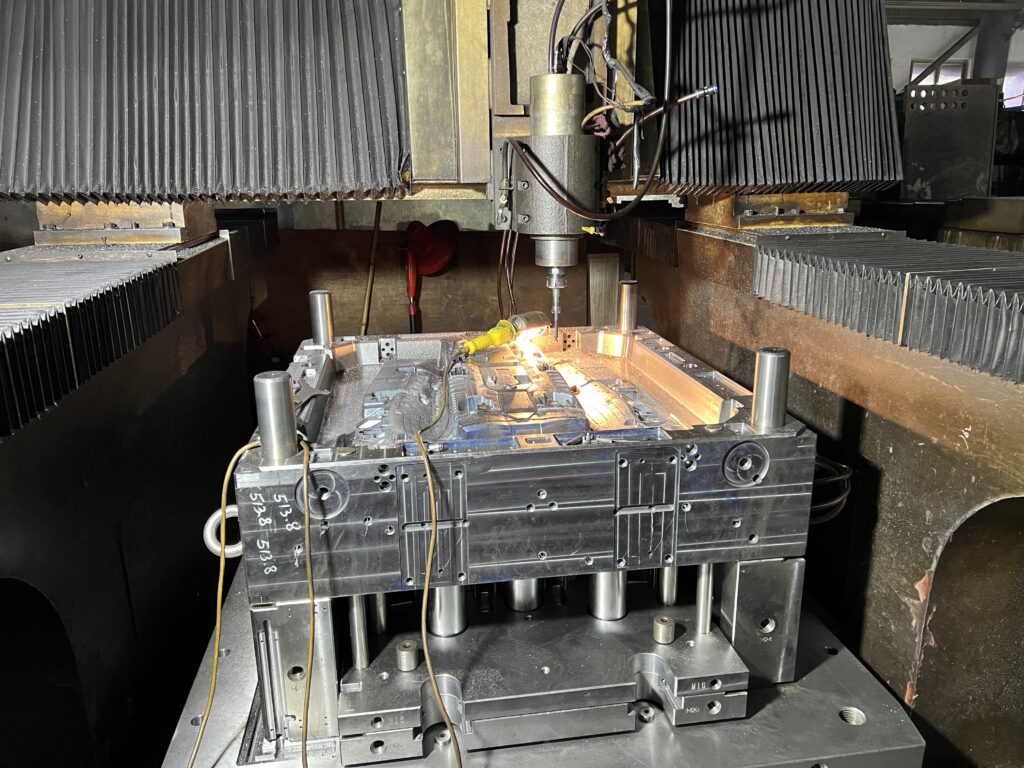I. Introduction
Mold texture is an integral component of injection molding that directly influences the final surface finish of plastic parts, contributing to their aesthetic appeal and functional properties. It plays an instrumental role in producing effective parts. This article seeks to provide an in-depth examination of how mold texture influences surface finish in injection molding processes. At this article’s conclusion, you will have gained an in-depth knowledge of surface finish factors and techniques, the various application techniques of texture finish application techniques available, and their advantages as well as criteria for measuring it. By the time of its conclusion, you should possess all of this information on mold texture in plastic injection molding as it impacts final product quality and overall mold texture importance in injection molding processes.
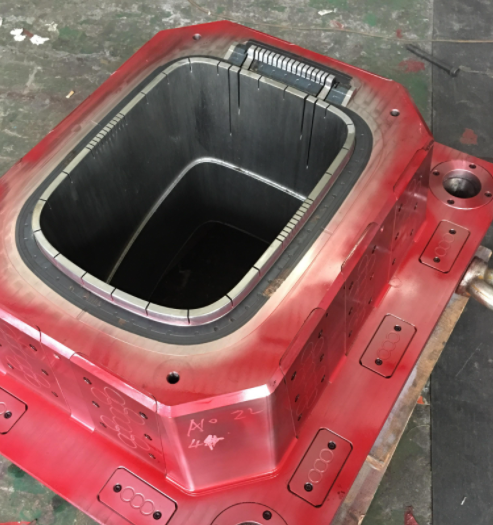
II. What is Mold Texture?
Mold texture refers to the surface finish of mold cavities used for injection molding plastic parts, such as those created through injection molding. It refers to either roughness or smoothness on its surface that impacts its final product – the plastic part itself. When injection molding takes place, its texture transfers directly onto its final form through techniques like sandblasting, grit sanding stones, diamond buffing or pressure blasting – although various techniques exist that create it too – including sandblasting, grit sanding stones diamond buffing, and pressure blasting techniques among many more!
Mold texture plays an integral part in creating the final surface finish of plastic parts; for instance, products designed for improved grip may call for rougher textures while products created for aesthetic purposes require smoother finishes. Mold textures have an immense influence on product quality and performance – in the next section, we will examine factors governing injection molded part finishes.
different types of mold textures
Mold texture can be divided into numerous classifications depending on its pattern, depth, and thickness. Here are some types of injection molding mold textures used today:
1. Matte Finish
This finish provides a matte texture with rough surfaces and low levels of glossiness.
2. Semi-gloss Finish
This texture features a flat surface with slightly glossy shines to give the illusion of depth and dimension.
3. High surface texture
This texture features a rough, shiny surface with high levels of glossiness.
4. Transparent Texture
This texture creates an almost-clear or transparent surface.
5. Random Nature
This texture creates a surface with random patterns that do not follow any particular order.
6. Linear Scratches
These textures create straight or curved lines on the surface.
7. Sand Pattern
Created using sand, this texture produces rough finishes with visible sand patterns.
Application-specific considerations play a key role in selecting an ideal plastic part texture; choosing an optimal texture for any given application can make or break its effectiveness. We will next explore factors determining the surface finishes of injection molded parts.
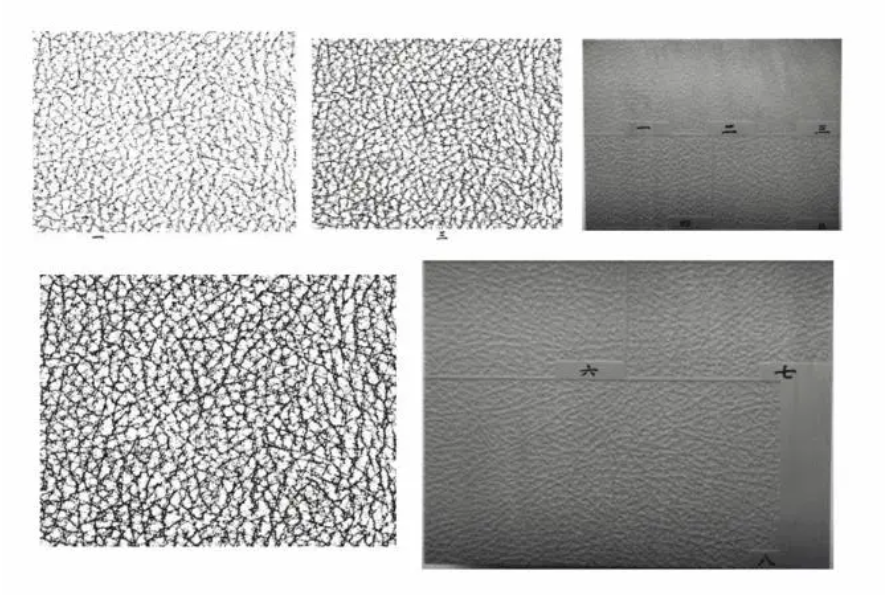
III. What Determines Surface Finish in Injection Molded Parts?
the factors that impact surface finish, including mold design, material properties, and processing conditions
Surface finish in injection-molded parts can be determined by various factors, including mold design, material properties, and processing conditions. Furthermore, mold texture has an integral part to play when it comes to determining their surface finish.
Mold design–such as gate location, runner system, and cooling system–has an enormous influence over the surface finish of a part. Poorly planned molds may produce flow lines, sink marks, or other defects on their surface that compromise their aesthetic appearance.
Material properties also play a part in shaping the surface finish of parts. The type of material chosen, including its viscosity, melt flow rate, and shrinkage rate can all have an effect. Materials with higher melt flow rates and lower viscosities tend to produce glossier finishes than those with lower melt flows and greater viscosities.
Processing conditions, such as injection speed, packing pressure, and temperature profile can all have an effect on the surface finish of a part. How quickly the material enters a mold has an influence over texture depth and thickness as well as the overall finish thickness of its final result.
Overall, to achieve the desired surface finish of an injection molded part it takes an amalgam of mold design, material properties, and processing conditions to realize your vision of perfection.

IV. How is Texture Applied to an Injection Mold?
the mold texturing process and different methods used
Injection mold textures can be created through various means. Some of the more prevalent approaches include sandblasting, grit sanding stones, diamond buffing paste, and pressure blasting.
Sandblasting involves blasting mold surfaces with sand to achieve an irregular or roughened texture, depending on factors like particle shape and direction, the pressure of application, and the size of particles aimed toward them. Sandblasting techniques use pressure applied by hand nozzles or pneumatic blast guns; size, shape, and pressure all influence texture creation.
Grit sanding stones provide another approach for adding texture to molds. They’re classified by particle size; smaller grains create finer textures while larger grit sizes result in coarser textures.
Diamond buffing paste can be used to polish mold surfaces to achieve the desired finish texture, such as creating an even, semi-gloss surface finish on them.
Pressure blasting involves applying high pressure with an abrasive material stream in order to create an uneven finish on mold surfaces. The size and shape of particles used, along with pressure intensity and duration can all influence their final texture.
Overall, the method chosen to texture an injection mold depends on both desired surface texture and the capabilities of the mold texturing company.

V. What is the Standard Texture of a Mold?
Plastics industries have established industry-wide mold texture standards in an effort to maintain consistency and quality when producing injection molded parts, providing mold makers and manufacturers with a framework to produce parts with desired textures that fulfill specific criteria.
Mold-Tech texture charts provide one of the most widely-used standards for mold texture, offering everything from high gloss to matte finishes and depth/thickness measurements, so manufacturers can select an optimal surface finish for their parts.
Plastics Industry Association’s (PIA) classification system categorizes surface textures based on appearance and roughness; this includes classifications A-1, A-2, and B-1 that help customers specify desired textures for certain applications.
Compliance with industry standards for mold texture helps manufacturers ensure that their parts meet customer specifications while providing consistent quality.
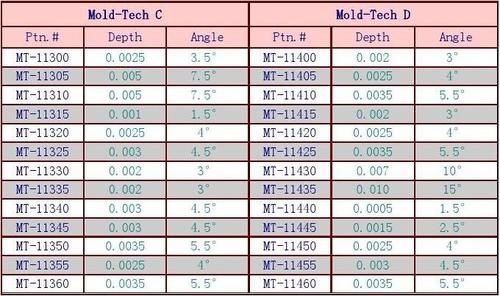
VI. Benefits of Applying Texture Finish to Injection Molded Parts
Applying texture finishes to injection molded parts can bring many advantages. Here are a few key ones:
1. Improved Grip: Textured surfaces can greatly enhance the grip of parts, making them easier to hold and handle – something which is particularly vital in applications where grip is key, like medical devices or handheld tools.
2. Enhanced Aesthetics: Texture can add depth and character to a part, giving it its own distinctive appearance and feel. By changing its surface texture, textures can transform components from rugged-looking parts into luxurious ones depending on what effect is desired.
3. Hiding Surface Defects: Texture can help mask surface defects in injection-molded parts, such as sink marks or machining marks, that would otherwise be easily visible due to transparent or glossy finishes. This technique is especially helpful in producing parts with transparent finishes where any defects would otherwise become quickly evident.
4. Improved Adhesion: Textured surfaces can help improve adhesion between plastic parts and any coatings or adhesives applied, especially useful if painting or coating are involved. This feature may make the part more durable in such instances as painting/coating applications.
Overall, texture finishes have several significant benefits that can make an enormous impactful difference on injection molded parts and their finished products. They improve usability and appeal.

VII. Criteria for Texture
Selecting an ideal texture is critical in creating desired surface finishes in injection molded parts. Criteria for texture selection depend upon various considerations including desired surface texture, material properties, and processing conditions.
One of the primary criteria when selecting texture options is a material choice; certain materials, like ABS or polycarbonate, lend themselves better than others to certain textures. Depth, surface roughness, and thickness all play important roles when it comes to creating products with visually striking appearances and functional abilities.
Processing conditions also play a pivotal role in selecting texture. Factors like injection speed, mold temperature, and cooling rate all have an influence over the final surface finish of molded parts, while complex mold cavities with undercuts or difficult-to-reach areas could impact texture selection decisions as well.
Finally, surface texture selection plays a critical role. Textures can help achieve various finishes ranging from matte to semi-gloss to glossy; factors like straight or curved lines, random patterns, or images such as stone patterns may all help achieve the texture you’re after.
Selecting an optimal texture for an injection molding project involves carefully considering numerous aspects, including material properties, processing conditions, and desired surface finish.
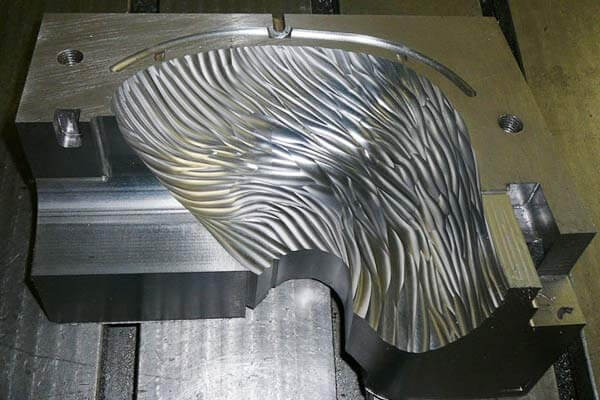
VIII. How is Surface Texture Finish Measured?
When measuring surface texture finish in injection molded parts, there are multiple methods available for assessment of its texture finish. These may include gloss units, surface roughness measurements, and visual inspection.
Gloss units are an established method for measuring the reflective properties of surfaces. To do so, light is shone onto them before measuring how much of it bounces back off them; then gloss units can range anywhere between zero (for perfectly matte finishes) to one hundred for highly reflective finishes.
Surface roughness measurements provide another method for gauging surface texture, using a profilometer to take readings from various parts of a surface and their elevation changes. Results for roughness measurements are often expressed as microns or Ra values representing average roughness measurements on that particular area of terrain.
Visual inspection is another reliable means of measuring surface texture finish, with this practice consisting of inspecting it under different lighting conditions and angles to assess texture depth levels as well as the overall appearance of its surface.
Understanding how to measure surface texture finish is integral in order to attain the desired finish and meet the specifications of the parts produced.
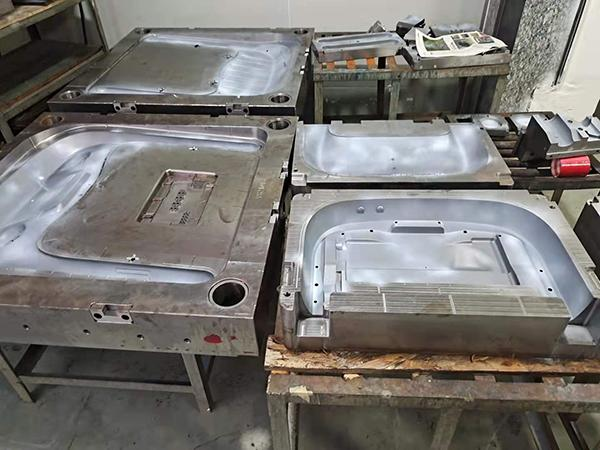
IX.Conclusion
Conclusion Mold texture plays an integral part in defining the surface finish of injection molded parts, and texturing processes use various methods such as sandblasting, grit sanding stones, diamond buffing paste, and pressure blasting to reach their ultimate texture – determined by industry standards like Mold-Tech texture chart and the PIA classification system. Selecting an optimal texture is paramount in attaining desired surface finishes while improving grip, and aesthetics and hiding defects on parts produced through molding processes.
Surface finish and texture are distinct concepts that require different measurement techniques, including gloss units, surface roughness measurements, and visual inspection. Therefore, understanding both concepts is critical in producing high-quality injection molded parts.
By considering criteria such as desired surface texture, material properties, and processing conditions when choosing mold textures, manufacturers can produce injection molded parts with consistent surface finishes to meet customer demands. Mold textures play a significant part in injection molding processes and careful attention must be paid when choosing one; their selection has an enormous bearing on product quality and performance.

